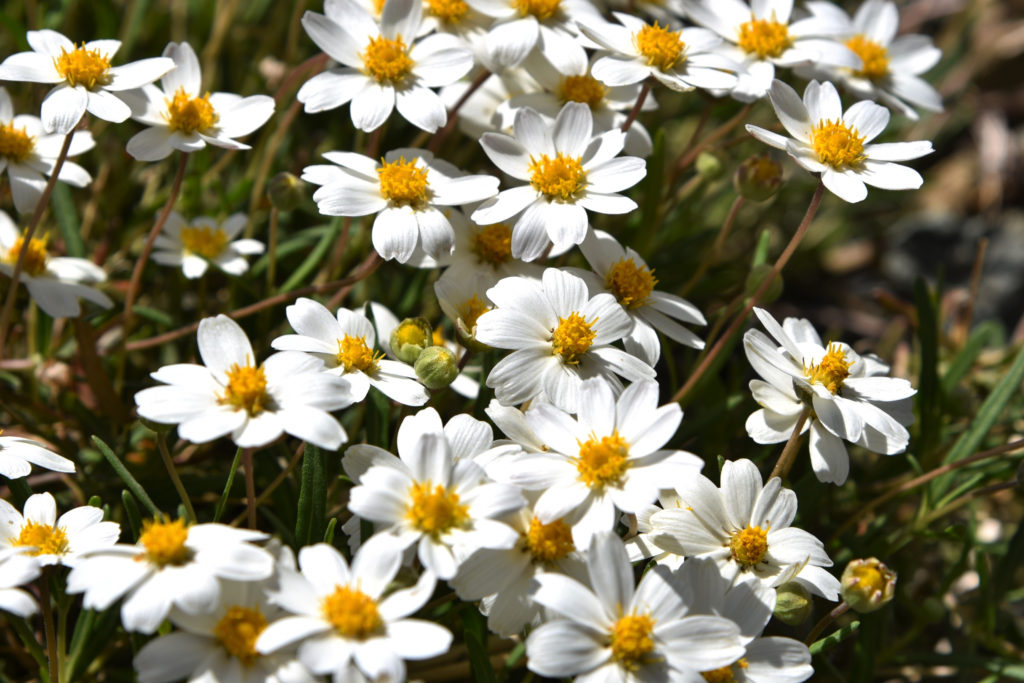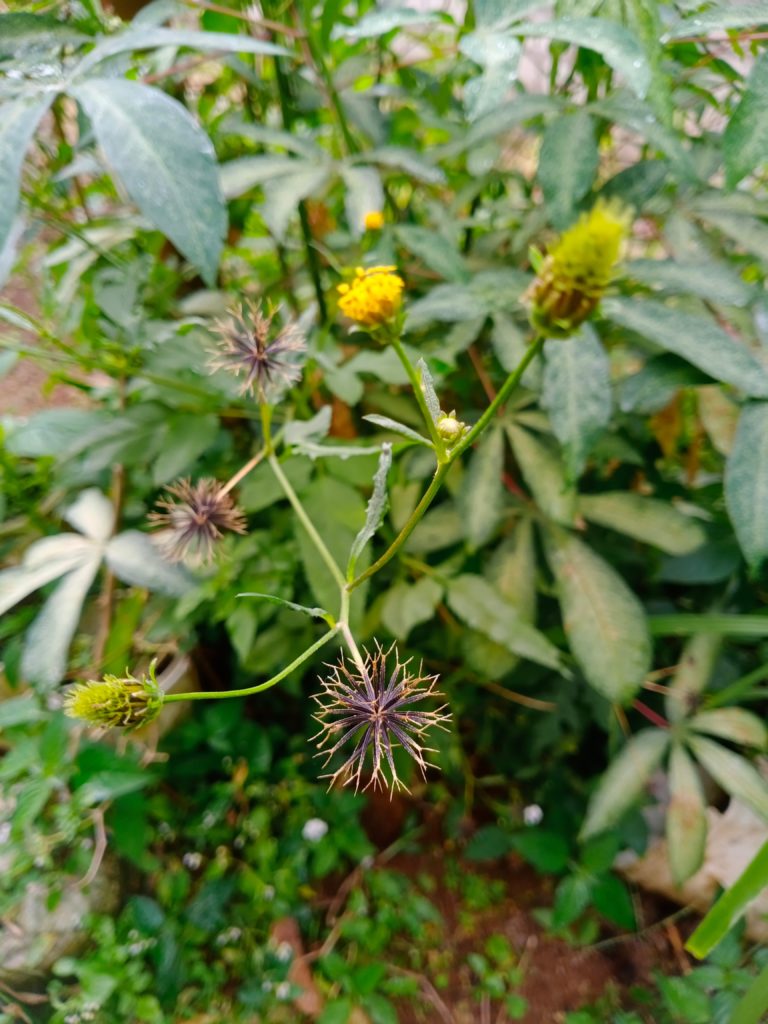Scientific name: Bidens bipinnata
Common names: Beggar’s tick, Devil’s needles, Butterfly needles, Pitchfork weed, Spanish gold, Spanish needle, Pine and needle, Pinaneedle
Bidens bipinnata is an annual herbaceous plant that typically grows to a height of about 1 meter (3 feet). It has finely divided, fern-like leaves that are arranged opposite each other along the stem. The leaves are bipinnately compound, meaning that they are divided into two or three leaflets, each of which is further divided into smaller segments.
The plant produces small, yellow flowers that are arranged in clusters at the tips of the branches. Each flower head consists of central disc florets surrounded by ray florets.
Beggar’s tick is native to USVI, North and South America, and is found in a variety of habitats, including fields, roadsides, waste areas, and disturbed sites. It is a common weed in many regions.
Medicinal uses:
In traditional medicine, various parts of the Beggar’s tick plant have been used to treat a range of ailments. For example, the leaves and stems have been used to make a tea that is believed to have diuretic properties and to promote sweating. The plant has also been used externally as a poultice to treat wounds and skin infections.

